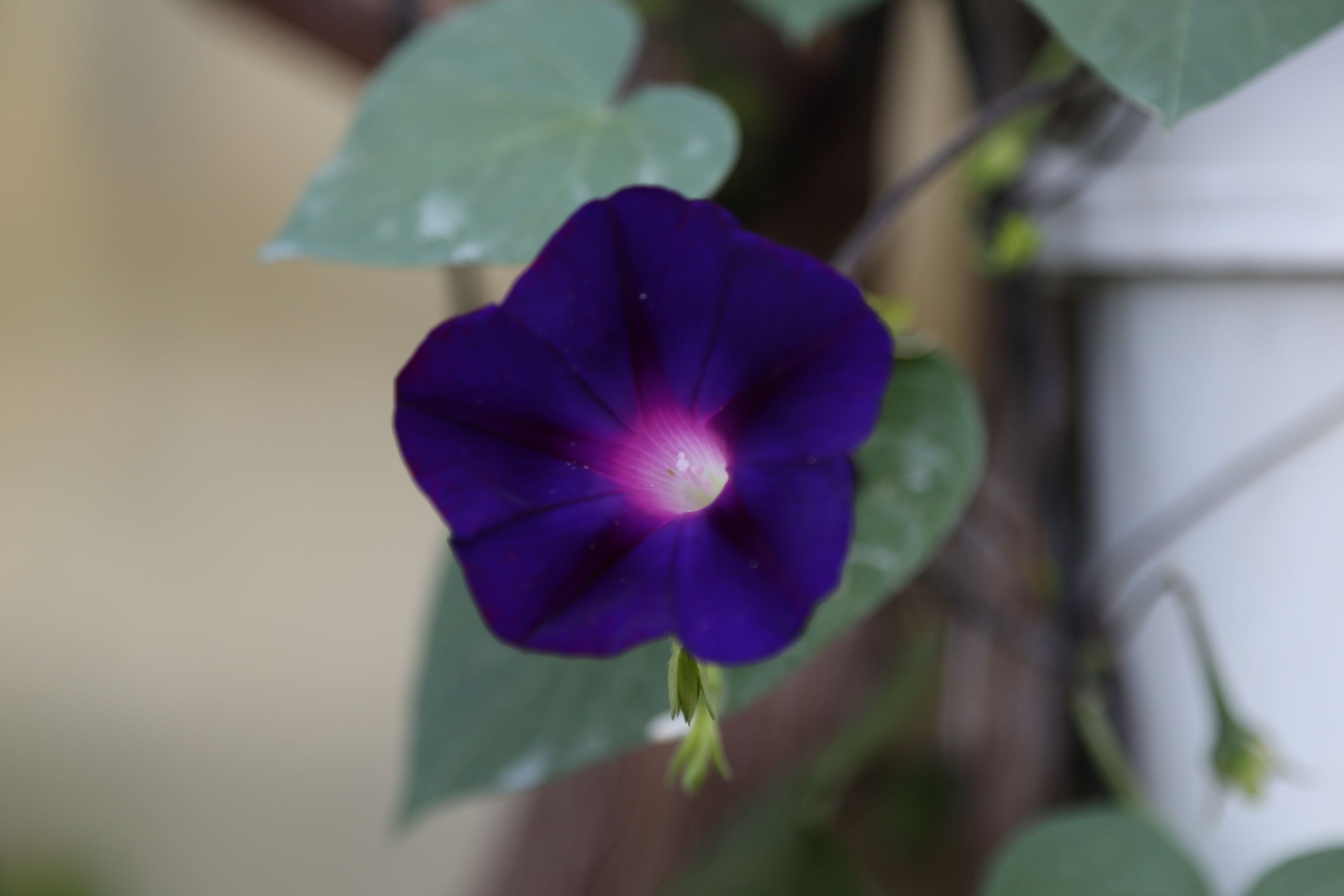Morning glory
(Ipomoea purpurea)

Description
Ipomoea purpurea, commonly known as the morning glory, is a species of flowering plant that belongs to the family Convolvulaceae. The plant is native to tropical regions of South America, but it has been widely introduced and naturalized in various parts of the world, including North America, Europe, and Asia. This article will provide a comprehensive overview of the plant, including its taxonomy, morphology, distribution, habitat, ecology, cultivation, and uses. Taxonomy: The scientific name of the morning glory is Ipomoea purpurea. The genus Ipomoea comprises more than 500 species of flowering plants, many of which are cultivated as ornamentals or used for medicinal purposes. The name Ipomoea is derived from the Greek words "ips" meaning worm and "homoios" meaning resembling, referring to the worm-like shape of the plant's stem. Morphology: The morning glory is a climbing annual or perennial vine that can grow up to 3 meters long. The stem is slender and twining, with small adventitious roots along its length that help it climb and attach to supporting structures. The leaves are heart-shaped or triangular, with pointed tips, and measure 5 to 15 centimeters in length. The flowers are funnel-shaped, measure 5 to 8 centimeters in diameter, and are typically pink, purple, blue, or white in color. They bloom in the morning and close in the afternoon, giving the plant its common name. The fruit is a capsule that contains several small, black seeds. Distribution and Habitat: The morning glory is native to tropical regions of South America, including Mexico, Central America, and the Caribbean. It has been introduced and naturalized in many other parts of the world, including North America, Europe, and Asia. The plant is commonly found in disturbed areas, such as roadsides, fields, and gardens. It prefers well-drained soils and full sun exposure but can tolerate some shade. Ecology: The morning glory is an important nectar source for many pollinators, including bees, butterflies, and hummingbirds. The plant is also a host to the sweet potato whitefly, which can be a pest in agricultural settings. The seeds of the morning glory are toxic and can cause hallucinations and other symptoms if ingested in large quantities. Cultivation: The morning glory is a popular ornamental plant that is grown for its attractive flowers and easy-to-grow nature. The plant is propagated by seed, which should be sown directly in the ground after the danger of frost has passed. The seeds can also be soaked in water for several hours before planting to help with germination. The plant prefers well-drained soils and full sun exposure but can tolerate some shade. It should be watered regularly and fertilized with a balanced fertilizer once a month during the growing season. The morning glory can also be grown in containers, but it may require support for climbing. Uses: The morning glory has been used for various medicinal purposes in traditional medicine. The seeds were used as a purgative and to induce vomiting, and the leaves were used as a poultice for skin irritations. However, the plant is toxic and should not be used for self-medication without proper guidance from a qualified healthcare provider. The morning glory is also used in landscaping and gardening as a decorative plant, either as a climbing vine or as a groundcover. The plant is easy to grow and requires little maintenance, making it a popular choice for gardeners of all skill levels. In conclusion, Ipomoea purpurea, or the morning glory, is a versatile plant that is known for its attractive flowers, easy-to-grow nature, and medicinal properties.
Taxonomic tree:







